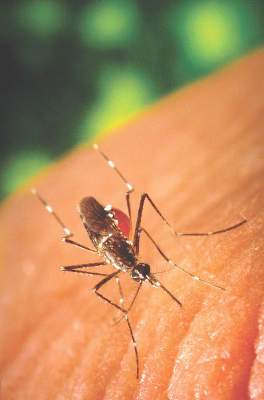User login
Methadone programs allowed pregnancy outcomes similar to nonusers
Methadone users under professional programs have similar pregnancy outcomes as nonmethadone users, according to a study of more than 34,000 deliveries.
Dr. Conisha Holloman of Winnie Palmer Hospital Orlando, Fla., analyzed 34,482 deliveries from 2010 to 2013, comparing women enrolled in methadone programs, those with cocaine or heroine use but no treatment or self medication with methadone, and a large group of controls.
“What we found was a significant difference between preterm births in the groups,” Dr. Holloman said at the annual meeting of the American College of Obstetricians and Gynecologists.
The preterm birth rate was 15% among the 55 patients enrolled in methadone programs. The preterm birth rate rose to 36% among the 34,408 patients in the control group, who had no addiction issues. Comparatively, the preterm birth rate was 53% among the 19 patients who tested positive for cocaine, heroine, or methadone use and were either self treating or not enrolled in a treatment program.
The study also noted neonatal intensive care unit (NICU) admission rates were higher for infants of drug-using patients who were self treating or who were not enrolled in methadone programs. The NICU admission rate for infants of those patients was 26%, compared with 16% for the women in the methadone program and 7% for the control group.
The demographics in the groups were comparable, with no significant difference between age, primigravida, and class III obesity status.
“We encourage women to get into a methadone assisted program, because a lot of these women end up getting earlier prenatal care and better social situations as far as high-risk behavior and improved nutrition for maternal health,” said Dr. Holloman.
Dr. Holloman reported having no relevant financial disclosures.
Methadone users under professional programs have similar pregnancy outcomes as nonmethadone users, according to a study of more than 34,000 deliveries.
Dr. Conisha Holloman of Winnie Palmer Hospital Orlando, Fla., analyzed 34,482 deliveries from 2010 to 2013, comparing women enrolled in methadone programs, those with cocaine or heroine use but no treatment or self medication with methadone, and a large group of controls.
“What we found was a significant difference between preterm births in the groups,” Dr. Holloman said at the annual meeting of the American College of Obstetricians and Gynecologists.
The preterm birth rate was 15% among the 55 patients enrolled in methadone programs. The preterm birth rate rose to 36% among the 34,408 patients in the control group, who had no addiction issues. Comparatively, the preterm birth rate was 53% among the 19 patients who tested positive for cocaine, heroine, or methadone use and were either self treating or not enrolled in a treatment program.
The study also noted neonatal intensive care unit (NICU) admission rates were higher for infants of drug-using patients who were self treating or who were not enrolled in methadone programs. The NICU admission rate for infants of those patients was 26%, compared with 16% for the women in the methadone program and 7% for the control group.
The demographics in the groups were comparable, with no significant difference between age, primigravida, and class III obesity status.
“We encourage women to get into a methadone assisted program, because a lot of these women end up getting earlier prenatal care and better social situations as far as high-risk behavior and improved nutrition for maternal health,” said Dr. Holloman.
Dr. Holloman reported having no relevant financial disclosures.
Methadone users under professional programs have similar pregnancy outcomes as nonmethadone users, according to a study of more than 34,000 deliveries.
Dr. Conisha Holloman of Winnie Palmer Hospital Orlando, Fla., analyzed 34,482 deliveries from 2010 to 2013, comparing women enrolled in methadone programs, those with cocaine or heroine use but no treatment or self medication with methadone, and a large group of controls.
“What we found was a significant difference between preterm births in the groups,” Dr. Holloman said at the annual meeting of the American College of Obstetricians and Gynecologists.
The preterm birth rate was 15% among the 55 patients enrolled in methadone programs. The preterm birth rate rose to 36% among the 34,408 patients in the control group, who had no addiction issues. Comparatively, the preterm birth rate was 53% among the 19 patients who tested positive for cocaine, heroine, or methadone use and were either self treating or not enrolled in a treatment program.
The study also noted neonatal intensive care unit (NICU) admission rates were higher for infants of drug-using patients who were self treating or who were not enrolled in methadone programs. The NICU admission rate for infants of those patients was 26%, compared with 16% for the women in the methadone program and 7% for the control group.
The demographics in the groups were comparable, with no significant difference between age, primigravida, and class III obesity status.
“We encourage women to get into a methadone assisted program, because a lot of these women end up getting earlier prenatal care and better social situations as far as high-risk behavior and improved nutrition for maternal health,” said Dr. Holloman.
Dr. Holloman reported having no relevant financial disclosures.
At ACOG 2016
Key clinical point: Women enrolled in supervised methadone programs had similar preterm birth rates to healthy controls.
Major finding: Preterm birth rates were 15% among methadone users and 36% among controls.
Data source: A retrospective study of 34,482 deliveries from 2010 to 2013.
Disclosures: Dr. Holloman reported having no relevant financial disclosures.
Invasive group A strep infection in the U.S. remains substantial
Invasive group A Streptococcus infection (GAS) in the United States caused 10,649-13,434 illnesses per year, and 1,136-1,607 deaths annually, during 2005-2012, according to researchers.
From January of 2005 to December of 2012, 9,557 cases and 1,117 deaths were reported to the Centers for Disease Control and Prevention’s Active Bacterial Core surveillance. GAS incidence was highest in people aged 65 and older, at 9.4 cases per 100,000, people younger than 1 year old at 5.3 per 100,000, and blacks at 4.7 per 100,000, said Dr. George E. Nelson and his associates.
Patients with septic shock were at the highest risk of death (odds ratio, 9.11), followed by necrotizing fasciitis (OR, 5.25). By age, adults aged 75 and older were at the highest risk of death (OR, 5.41).
“Invasive GAS remains a serious infection associated with high mortality. With no new effective tools for disease prevention, rates have remained unchanged over the last 13 years. In this setting, more rapid recognition of severe GAS infections and prompt and appropriate treatments are needed. Given that the initial presentation of invasive GAS infections [is] often nonspecific and can cause severe disease and death, vaccines are sorely needed.” the researchers concluded.
They reported no conflicts.
Find the study at doi: 10.1093/cid/ciw248.
Invasive group A Streptococcus infection (GAS) in the United States caused 10,649-13,434 illnesses per year, and 1,136-1,607 deaths annually, during 2005-2012, according to researchers.
From January of 2005 to December of 2012, 9,557 cases and 1,117 deaths were reported to the Centers for Disease Control and Prevention’s Active Bacterial Core surveillance. GAS incidence was highest in people aged 65 and older, at 9.4 cases per 100,000, people younger than 1 year old at 5.3 per 100,000, and blacks at 4.7 per 100,000, said Dr. George E. Nelson and his associates.
Patients with septic shock were at the highest risk of death (odds ratio, 9.11), followed by necrotizing fasciitis (OR, 5.25). By age, adults aged 75 and older were at the highest risk of death (OR, 5.41).
“Invasive GAS remains a serious infection associated with high mortality. With no new effective tools for disease prevention, rates have remained unchanged over the last 13 years. In this setting, more rapid recognition of severe GAS infections and prompt and appropriate treatments are needed. Given that the initial presentation of invasive GAS infections [is] often nonspecific and can cause severe disease and death, vaccines are sorely needed.” the researchers concluded.
They reported no conflicts.
Find the study at doi: 10.1093/cid/ciw248.
Invasive group A Streptococcus infection (GAS) in the United States caused 10,649-13,434 illnesses per year, and 1,136-1,607 deaths annually, during 2005-2012, according to researchers.
From January of 2005 to December of 2012, 9,557 cases and 1,117 deaths were reported to the Centers for Disease Control and Prevention’s Active Bacterial Core surveillance. GAS incidence was highest in people aged 65 and older, at 9.4 cases per 100,000, people younger than 1 year old at 5.3 per 100,000, and blacks at 4.7 per 100,000, said Dr. George E. Nelson and his associates.
Patients with septic shock were at the highest risk of death (odds ratio, 9.11), followed by necrotizing fasciitis (OR, 5.25). By age, adults aged 75 and older were at the highest risk of death (OR, 5.41).
“Invasive GAS remains a serious infection associated with high mortality. With no new effective tools for disease prevention, rates have remained unchanged over the last 13 years. In this setting, more rapid recognition of severe GAS infections and prompt and appropriate treatments are needed. Given that the initial presentation of invasive GAS infections [is] often nonspecific and can cause severe disease and death, vaccines are sorely needed.” the researchers concluded.
They reported no conflicts.
Find the study at doi: 10.1093/cid/ciw248.
FROM CLINICAL INFECTIOUS DISEASES
Rosacea patients have higher risk of dementia
Patients with rosacea have a higher risk of being diagnosed with certain forms of dementia, particularly Alzheimer’s disease (AD), according to Dr. Alexander Egeberg and his associates.
“We hypothesized that patients with rosacea may have increased risk of AD, because we have clinically observed a familial overrepresentation of AD in patients with rosacea, and because of the overlap of proinflammatory mediators between rosacea and AD,” wrote Dr. Egeberg of the National Allergy Research Center at the University of Copenhagen.
The researchers studied more than 5 million Danish citizens 18 years and older from Jan. 1, 1997, to Dec. 31, 2012. After excluding some people from the analysis for various reasons, including incomplete information, the cohort size was 5,591,718. Overall, 82,439 individuals had rosacea, and 29,193 of patients were diagnosed with AD.
“We found a significant association with dementia, and especially AD, in patients with rosacea,” the investigators wrote. They said the associations were strongest in people aged 60 or under at baseline, and “the results remained consistent in a range of sensitivity analyses and after adjustment for potential confounding factors.”
Future research might focus on symptoms of cognitive dysfunction in patients with rosacea, they wrote.
Find the study here.
Patients with rosacea have a higher risk of being diagnosed with certain forms of dementia, particularly Alzheimer’s disease (AD), according to Dr. Alexander Egeberg and his associates.
“We hypothesized that patients with rosacea may have increased risk of AD, because we have clinically observed a familial overrepresentation of AD in patients with rosacea, and because of the overlap of proinflammatory mediators between rosacea and AD,” wrote Dr. Egeberg of the National Allergy Research Center at the University of Copenhagen.
The researchers studied more than 5 million Danish citizens 18 years and older from Jan. 1, 1997, to Dec. 31, 2012. After excluding some people from the analysis for various reasons, including incomplete information, the cohort size was 5,591,718. Overall, 82,439 individuals had rosacea, and 29,193 of patients were diagnosed with AD.
“We found a significant association with dementia, and especially AD, in patients with rosacea,” the investigators wrote. They said the associations were strongest in people aged 60 or under at baseline, and “the results remained consistent in a range of sensitivity analyses and after adjustment for potential confounding factors.”
Future research might focus on symptoms of cognitive dysfunction in patients with rosacea, they wrote.
Find the study here.
Patients with rosacea have a higher risk of being diagnosed with certain forms of dementia, particularly Alzheimer’s disease (AD), according to Dr. Alexander Egeberg and his associates.
“We hypothesized that patients with rosacea may have increased risk of AD, because we have clinically observed a familial overrepresentation of AD in patients with rosacea, and because of the overlap of proinflammatory mediators between rosacea and AD,” wrote Dr. Egeberg of the National Allergy Research Center at the University of Copenhagen.
The researchers studied more than 5 million Danish citizens 18 years and older from Jan. 1, 1997, to Dec. 31, 2012. After excluding some people from the analysis for various reasons, including incomplete information, the cohort size was 5,591,718. Overall, 82,439 individuals had rosacea, and 29,193 of patients were diagnosed with AD.
“We found a significant association with dementia, and especially AD, in patients with rosacea,” the investigators wrote. They said the associations were strongest in people aged 60 or under at baseline, and “the results remained consistent in a range of sensitivity analyses and after adjustment for potential confounding factors.”
Future research might focus on symptoms of cognitive dysfunction in patients with rosacea, they wrote.
Find the study here.
FROM ANNALS OF NEUROLOGY
CDC issues guidance on worker precautions against Zika virus
As the Zika virus continues to spread, officials at the Occupational Safety and Health Administration (OSHA) and the Centers for Disease Control and Prevention have created a list of precautions to help outdoor workers, healthcare and laboratory personnel, and mosquito control workers avoid infection.
For outdoor workers, the prevention strategies center around using insect repellents, wearing clothing that provides a barrier against mosquitoes, and removing sources of standing water. For people working in healthcare settings and laboratories, OSHA and the CDC urge following good infection control and biosafety practices, including universal precautions to minimize the transmission of Zika virus, and when appropriate to wear gloves, gowns, masks, and eye protection.
Outdoor workers could be at the highest risk of catching the Zika virus, according to the guidance document.
Taking precautions to avoid mosquito bites is especially important when traveling to a Zika-affected area. OSHA and CDC also advised that workers should consider delaying travel if they may become pregnant, or have sexual partners who may become pregnant. The CDC recommends that pregnant women in any trimester avoid travel to an area with active Zika virus transmission.
“Even if they do not feel sick, travelers returning to the United States from an area with Zika should take steps to prevent mosquito bites for three weeks so they do not pass Zika to mosquitoes that could spread the virus to other people,” according to the guidance.
To find more information, click here.
As the Zika virus continues to spread, officials at the Occupational Safety and Health Administration (OSHA) and the Centers for Disease Control and Prevention have created a list of precautions to help outdoor workers, healthcare and laboratory personnel, and mosquito control workers avoid infection.
For outdoor workers, the prevention strategies center around using insect repellents, wearing clothing that provides a barrier against mosquitoes, and removing sources of standing water. For people working in healthcare settings and laboratories, OSHA and the CDC urge following good infection control and biosafety practices, including universal precautions to minimize the transmission of Zika virus, and when appropriate to wear gloves, gowns, masks, and eye protection.
Outdoor workers could be at the highest risk of catching the Zika virus, according to the guidance document.
Taking precautions to avoid mosquito bites is especially important when traveling to a Zika-affected area. OSHA and CDC also advised that workers should consider delaying travel if they may become pregnant, or have sexual partners who may become pregnant. The CDC recommends that pregnant women in any trimester avoid travel to an area with active Zika virus transmission.
“Even if they do not feel sick, travelers returning to the United States from an area with Zika should take steps to prevent mosquito bites for three weeks so they do not pass Zika to mosquitoes that could spread the virus to other people,” according to the guidance.
To find more information, click here.
As the Zika virus continues to spread, officials at the Occupational Safety and Health Administration (OSHA) and the Centers for Disease Control and Prevention have created a list of precautions to help outdoor workers, healthcare and laboratory personnel, and mosquito control workers avoid infection.
For outdoor workers, the prevention strategies center around using insect repellents, wearing clothing that provides a barrier against mosquitoes, and removing sources of standing water. For people working in healthcare settings and laboratories, OSHA and the CDC urge following good infection control and biosafety practices, including universal precautions to minimize the transmission of Zika virus, and when appropriate to wear gloves, gowns, masks, and eye protection.
Outdoor workers could be at the highest risk of catching the Zika virus, according to the guidance document.
Taking precautions to avoid mosquito bites is especially important when traveling to a Zika-affected area. OSHA and CDC also advised that workers should consider delaying travel if they may become pregnant, or have sexual partners who may become pregnant. The CDC recommends that pregnant women in any trimester avoid travel to an area with active Zika virus transmission.
“Even if they do not feel sick, travelers returning to the United States from an area with Zika should take steps to prevent mosquito bites for three weeks so they do not pass Zika to mosquitoes that could spread the virus to other people,” according to the guidance.
To find more information, click here.
NIH launches research program to lower disparities in surgical care
The National Institute on Minority Health and Health Disparities (NIMHD), a division of the National Institutes of Health, has developed an initiative to conduct research on disparities in surgical care for disadvantaged populations.
Health disparities are typically associated with higher rates of chronic disabling conditions, greater comorbidity, a higher risk of premature death, lower quality of life, and longer recovery from disease. Disparities are also found in surgical outcomes.
“Disparities in surgical care can result in poorer functional outcomes, prolonged rehabilitation and recovery, and lower quality of life, particularly for disadvantaged population groups,” said Dr. Eliseo J. Pérez-Stable, NIMHD Director. “Racial and ethnic minority and low-income population groups are often times disproportionately affected by access, availability, and affordability to the most advanced health care services.”
Roughly 51 million inpatient and 53 million outpatient surgical cases are performed in the United States every year, according to the Centers for Disease Control and Prevention. Research has indicated surgical care or anesthesia management or sometimes both are needed for 11%-30% of the patients suffering from the global burdens of disease, according to NIMHD. This research program, which has been approved by the National Advisory Council on Minority Health and Health Disparities, will help reduce unequal access in surgical care and improve outcomes.
Factors identified as affecting surgical outcomes include patient characteristics, healthcare system and access, clinical care and quality, and postoperative care and rehabilitation. However, for surgical disparities research, five overarching priorities have been highlighted for closer examination including improving patient-clinician communication, evaluating longer term effects, and improving patient centeredness. The NIMHD initiative will support development of a national research agenda in the area of disparities in surgical access, care, and outcomes.
Dr. Irene Dankwa-Mullan, acting deputy director, Division of Extramural Research at NIMHD, believes the program is a great chance to truly learn what are the causes and the solutions to surgical disparities. “The new research program will examine hypotheses based on published or evidence-based surgical methods that identify new indications or approaches to improving access, care coordination, outcomes, safety, and quality of surgical care for health disparity populations.”
Find the study at the National Institutes of Health here.
The National Institute on Minority Health and Health Disparities (NIMHD), a division of the National Institutes of Health, has developed an initiative to conduct research on disparities in surgical care for disadvantaged populations.
Health disparities are typically associated with higher rates of chronic disabling conditions, greater comorbidity, a higher risk of premature death, lower quality of life, and longer recovery from disease. Disparities are also found in surgical outcomes.
“Disparities in surgical care can result in poorer functional outcomes, prolonged rehabilitation and recovery, and lower quality of life, particularly for disadvantaged population groups,” said Dr. Eliseo J. Pérez-Stable, NIMHD Director. “Racial and ethnic minority and low-income population groups are often times disproportionately affected by access, availability, and affordability to the most advanced health care services.”
Roughly 51 million inpatient and 53 million outpatient surgical cases are performed in the United States every year, according to the Centers for Disease Control and Prevention. Research has indicated surgical care or anesthesia management or sometimes both are needed for 11%-30% of the patients suffering from the global burdens of disease, according to NIMHD. This research program, which has been approved by the National Advisory Council on Minority Health and Health Disparities, will help reduce unequal access in surgical care and improve outcomes.
Factors identified as affecting surgical outcomes include patient characteristics, healthcare system and access, clinical care and quality, and postoperative care and rehabilitation. However, for surgical disparities research, five overarching priorities have been highlighted for closer examination including improving patient-clinician communication, evaluating longer term effects, and improving patient centeredness. The NIMHD initiative will support development of a national research agenda in the area of disparities in surgical access, care, and outcomes.
Dr. Irene Dankwa-Mullan, acting deputy director, Division of Extramural Research at NIMHD, believes the program is a great chance to truly learn what are the causes and the solutions to surgical disparities. “The new research program will examine hypotheses based on published or evidence-based surgical methods that identify new indications or approaches to improving access, care coordination, outcomes, safety, and quality of surgical care for health disparity populations.”
Find the study at the National Institutes of Health here.
The National Institute on Minority Health and Health Disparities (NIMHD), a division of the National Institutes of Health, has developed an initiative to conduct research on disparities in surgical care for disadvantaged populations.
Health disparities are typically associated with higher rates of chronic disabling conditions, greater comorbidity, a higher risk of premature death, lower quality of life, and longer recovery from disease. Disparities are also found in surgical outcomes.
“Disparities in surgical care can result in poorer functional outcomes, prolonged rehabilitation and recovery, and lower quality of life, particularly for disadvantaged population groups,” said Dr. Eliseo J. Pérez-Stable, NIMHD Director. “Racial and ethnic minority and low-income population groups are often times disproportionately affected by access, availability, and affordability to the most advanced health care services.”
Roughly 51 million inpatient and 53 million outpatient surgical cases are performed in the United States every year, according to the Centers for Disease Control and Prevention. Research has indicated surgical care or anesthesia management or sometimes both are needed for 11%-30% of the patients suffering from the global burdens of disease, according to NIMHD. This research program, which has been approved by the National Advisory Council on Minority Health and Health Disparities, will help reduce unequal access in surgical care and improve outcomes.
Factors identified as affecting surgical outcomes include patient characteristics, healthcare system and access, clinical care and quality, and postoperative care and rehabilitation. However, for surgical disparities research, five overarching priorities have been highlighted for closer examination including improving patient-clinician communication, evaluating longer term effects, and improving patient centeredness. The NIMHD initiative will support development of a national research agenda in the area of disparities in surgical access, care, and outcomes.
Dr. Irene Dankwa-Mullan, acting deputy director, Division of Extramural Research at NIMHD, believes the program is a great chance to truly learn what are the causes and the solutions to surgical disparities. “The new research program will examine hypotheses based on published or evidence-based surgical methods that identify new indications or approaches to improving access, care coordination, outcomes, safety, and quality of surgical care for health disparity populations.”
Find the study at the National Institutes of Health here.
FROM THE NATIONAL INSTITUTES OF HEALTH
Single-question screen for alcohol use disorder good for rural teens
A single question on alcohol use frequency appears to be a good screening tool for DSM-5 alcohol use disorder in adolescents aged 12-17 years who live in rural areas, according to a study published in the Journal of Pediatrics.
“Approaches to facilitate screening to identify adolescents with alcohol-related problems are particularly needed for PCPs [primary care practitioners] in rural settings, given higher rates of alcohol use among rural youth,” said Dr. Duncan B. Clark of the University of Pittsburgh, and his associates.
This study of 1,193 adolescents aged 12-20 years was conducted from September 1, 2008 through June 3, 2015 and was located in the Pennsylvania Wilds region due to the area having the lowest population density and the most proximal rural area to the two universities conducting the studies. The adolescents were patients at six rural primary care clinics.
A threshold of greater than or equal to 3 days with alcohol use in the past year yielded “optimal psychometric performance” for early and middle adolescence: sensitivity of 91%; specificity of 93%; positive predictive value (PPV) of 44%; and negative predictive value (NPV) of 99%. In early adolescence (ages 12-14 years), 1.9% of 479 adolescents met DSM-5 criteria for alcohol use disorder (AUD) in the previous year, and in middle adolescence (ages 15-17 years), 9.5% of 463 subjects met the DSM-5 criteria for AUD in the previous year, the investigators said. However, late adolescents ages 18-20 years were tested by a threshold of greater than or equal to 12 days with alcohol use in the past year, in which 10% of 251 teens met DSM-5 criteria for AUD.
For routine adolescent alcohol screenings, a brief initial screen for DSM-5 AUD is the recommended approach. “In this study, for example, screening for DSM-5 AUD among adolescents ages 12 through 17 years with a threshold of greater than 3 days with alcohol use in the past year resulted in 99% NPV and 44% PPV. Adolescents reporting fewer than 3 days with alcohol use very rarely meet AUD criteria. Among those adolescents with 3 or more days with alcohol use, 44% had AUD,” Dr. Clark and his associates said.
However, in order to find more efficient statistics on underage drinking, screenings have to be improved. “Most practices are not currently using tablet computers to collect information, and integration of this approach into standard practice presents surmountable cost and logistical challenges,” they said.
Find the full story in the Journal of Pediatrics (doi: 10.1016/j.jpeds.2016.02.047).
A single question on alcohol use frequency appears to be a good screening tool for DSM-5 alcohol use disorder in adolescents aged 12-17 years who live in rural areas, according to a study published in the Journal of Pediatrics.
“Approaches to facilitate screening to identify adolescents with alcohol-related problems are particularly needed for PCPs [primary care practitioners] in rural settings, given higher rates of alcohol use among rural youth,” said Dr. Duncan B. Clark of the University of Pittsburgh, and his associates.
This study of 1,193 adolescents aged 12-20 years was conducted from September 1, 2008 through June 3, 2015 and was located in the Pennsylvania Wilds region due to the area having the lowest population density and the most proximal rural area to the two universities conducting the studies. The adolescents were patients at six rural primary care clinics.
A threshold of greater than or equal to 3 days with alcohol use in the past year yielded “optimal psychometric performance” for early and middle adolescence: sensitivity of 91%; specificity of 93%; positive predictive value (PPV) of 44%; and negative predictive value (NPV) of 99%. In early adolescence (ages 12-14 years), 1.9% of 479 adolescents met DSM-5 criteria for alcohol use disorder (AUD) in the previous year, and in middle adolescence (ages 15-17 years), 9.5% of 463 subjects met the DSM-5 criteria for AUD in the previous year, the investigators said. However, late adolescents ages 18-20 years were tested by a threshold of greater than or equal to 12 days with alcohol use in the past year, in which 10% of 251 teens met DSM-5 criteria for AUD.
For routine adolescent alcohol screenings, a brief initial screen for DSM-5 AUD is the recommended approach. “In this study, for example, screening for DSM-5 AUD among adolescents ages 12 through 17 years with a threshold of greater than 3 days with alcohol use in the past year resulted in 99% NPV and 44% PPV. Adolescents reporting fewer than 3 days with alcohol use very rarely meet AUD criteria. Among those adolescents with 3 or more days with alcohol use, 44% had AUD,” Dr. Clark and his associates said.
However, in order to find more efficient statistics on underage drinking, screenings have to be improved. “Most practices are not currently using tablet computers to collect information, and integration of this approach into standard practice presents surmountable cost and logistical challenges,” they said.
Find the full story in the Journal of Pediatrics (doi: 10.1016/j.jpeds.2016.02.047).
A single question on alcohol use frequency appears to be a good screening tool for DSM-5 alcohol use disorder in adolescents aged 12-17 years who live in rural areas, according to a study published in the Journal of Pediatrics.
“Approaches to facilitate screening to identify adolescents with alcohol-related problems are particularly needed for PCPs [primary care practitioners] in rural settings, given higher rates of alcohol use among rural youth,” said Dr. Duncan B. Clark of the University of Pittsburgh, and his associates.
This study of 1,193 adolescents aged 12-20 years was conducted from September 1, 2008 through June 3, 2015 and was located in the Pennsylvania Wilds region due to the area having the lowest population density and the most proximal rural area to the two universities conducting the studies. The adolescents were patients at six rural primary care clinics.
A threshold of greater than or equal to 3 days with alcohol use in the past year yielded “optimal psychometric performance” for early and middle adolescence: sensitivity of 91%; specificity of 93%; positive predictive value (PPV) of 44%; and negative predictive value (NPV) of 99%. In early adolescence (ages 12-14 years), 1.9% of 479 adolescents met DSM-5 criteria for alcohol use disorder (AUD) in the previous year, and in middle adolescence (ages 15-17 years), 9.5% of 463 subjects met the DSM-5 criteria for AUD in the previous year, the investigators said. However, late adolescents ages 18-20 years were tested by a threshold of greater than or equal to 12 days with alcohol use in the past year, in which 10% of 251 teens met DSM-5 criteria for AUD.
For routine adolescent alcohol screenings, a brief initial screen for DSM-5 AUD is the recommended approach. “In this study, for example, screening for DSM-5 AUD among adolescents ages 12 through 17 years with a threshold of greater than 3 days with alcohol use in the past year resulted in 99% NPV and 44% PPV. Adolescents reporting fewer than 3 days with alcohol use very rarely meet AUD criteria. Among those adolescents with 3 or more days with alcohol use, 44% had AUD,” Dr. Clark and his associates said.
However, in order to find more efficient statistics on underage drinking, screenings have to be improved. “Most practices are not currently using tablet computers to collect information, and integration of this approach into standard practice presents surmountable cost and logistical challenges,” they said.
Find the full story in the Journal of Pediatrics (doi: 10.1016/j.jpeds.2016.02.047).
FROM THE JOURNAL OF PEDIATRICS
Childhood Obesity Rates May Fall if Trend Continues
Children aged 2-5 years were less likely to be obese than older children in 2003-2004; however, the results were reversed in 2011-2012, according to Ashley Wendell Kranjac, Ph.D., of Rice University, Houston, and Robert L. Wagmiller, Ph.D., of Temple University, Philadelphia.
Previous research showed that in the United States, the obesity rate in children aged 2-5 years decreased from 14% in 2003-2004 to 8% in 2011-2012. The sample study using data from the National Health and Nutrition Examination Survey (NHANES) created by the investigators included 926 children from 2003 to 2004 (498 girls and 428 boys) and 974 children from 2011 to 2012 (482 girls and 492 boys), totaling 1,900 children.
Although age and time are factors of the decreasing obesity rate, there are multiple other components that ultimately determined the researchers’ statistics. Factors such as race, gender, a child’s health characteristics, and activity are just a few, and these all were included as Blinder-Oaxaca regression decomposition techniques were used to assess the change in obesity over time. “The fact that older children were more likely to be obese than younger children in 2003-2004, but not in 2011-2012, has further implications,” Dr. Kranjac and Dr. Wagmiller said.
“If this association between age and obesity persists as these children advance into middle and late childhood, sizable reductions in obesity rates at later stages of childhood can be expected, as well as significant declines in the overall rate of childhood obesity over time,” the investigators concluded.
Read more about the study at Pediatrics (2016. doi: 10.1542/peds.2015-2096).
Children aged 2-5 years were less likely to be obese than older children in 2003-2004; however, the results were reversed in 2011-2012, according to Ashley Wendell Kranjac, Ph.D., of Rice University, Houston, and Robert L. Wagmiller, Ph.D., of Temple University, Philadelphia.
Previous research showed that in the United States, the obesity rate in children aged 2-5 years decreased from 14% in 2003-2004 to 8% in 2011-2012. The sample study using data from the National Health and Nutrition Examination Survey (NHANES) created by the investigators included 926 children from 2003 to 2004 (498 girls and 428 boys) and 974 children from 2011 to 2012 (482 girls and 492 boys), totaling 1,900 children.
Although age and time are factors of the decreasing obesity rate, there are multiple other components that ultimately determined the researchers’ statistics. Factors such as race, gender, a child’s health characteristics, and activity are just a few, and these all were included as Blinder-Oaxaca regression decomposition techniques were used to assess the change in obesity over time. “The fact that older children were more likely to be obese than younger children in 2003-2004, but not in 2011-2012, has further implications,” Dr. Kranjac and Dr. Wagmiller said.
“If this association between age and obesity persists as these children advance into middle and late childhood, sizable reductions in obesity rates at later stages of childhood can be expected, as well as significant declines in the overall rate of childhood obesity over time,” the investigators concluded.
Read more about the study at Pediatrics (2016. doi: 10.1542/peds.2015-2096).
Children aged 2-5 years were less likely to be obese than older children in 2003-2004; however, the results were reversed in 2011-2012, according to Ashley Wendell Kranjac, Ph.D., of Rice University, Houston, and Robert L. Wagmiller, Ph.D., of Temple University, Philadelphia.
Previous research showed that in the United States, the obesity rate in children aged 2-5 years decreased from 14% in 2003-2004 to 8% in 2011-2012. The sample study using data from the National Health and Nutrition Examination Survey (NHANES) created by the investigators included 926 children from 2003 to 2004 (498 girls and 428 boys) and 974 children from 2011 to 2012 (482 girls and 492 boys), totaling 1,900 children.
Although age and time are factors of the decreasing obesity rate, there are multiple other components that ultimately determined the researchers’ statistics. Factors such as race, gender, a child’s health characteristics, and activity are just a few, and these all were included as Blinder-Oaxaca regression decomposition techniques were used to assess the change in obesity over time. “The fact that older children were more likely to be obese than younger children in 2003-2004, but not in 2011-2012, has further implications,” Dr. Kranjac and Dr. Wagmiller said.
“If this association between age and obesity persists as these children advance into middle and late childhood, sizable reductions in obesity rates at later stages of childhood can be expected, as well as significant declines in the overall rate of childhood obesity over time,” the investigators concluded.
Read more about the study at Pediatrics (2016. doi: 10.1542/peds.2015-2096).
FROM PEDIATRICS
Childhood obesity rates may fall if trend continues
Children aged 2-5 years were less likely to be obese than older children in 2003-2004; however, the results were reversed in 2011-2012, according to Ashley Wendell Kranjac, Ph.D., of Rice University, Houston, and Robert L. Wagmiller, Ph.D., of Temple University, Philadelphia.
Previous research showed that in the United States, the obesity rate in children aged 2-5 years decreased from 14% in 2003-2004 to 8% in 2011-2012. The sample study using data from the National Health and Nutrition Examination Survey (NHANES) created by the investigators included 926 children from 2003 to 2004 (498 girls and 428 boys) and 974 children from 2011 to 2012 (482 girls and 492 boys), totaling 1,900 children.
Although age and time are factors of the decreasing obesity rate, there are multiple other components that ultimately determined the researchers’ statistics. Factors such as race, gender, a child’s health characteristics, and activity are just a few, and these all were included as Blinder-Oaxaca regression decomposition techniques were used to assess the change in obesity over time. “The fact that older children were more likely to be obese than younger children in 2003-2004, but not in 2011-2012, has further implications,” Dr. Kranjac and Dr. Wagmiller said.
“If this association between age and obesity persists as these children advance into middle and late childhood, sizable reductions in obesity rates at later stages of childhood can be expected, as well as significant declines in the overall rate of childhood obesity over time,” the investigators concluded.
Read more about the study at Pediatrics (2016. doi: 10.1542/peds.2015-2096).
On Twitter @acruzfrontline1
Children aged 2-5 years were less likely to be obese than older children in 2003-2004; however, the results were reversed in 2011-2012, according to Ashley Wendell Kranjac, Ph.D., of Rice University, Houston, and Robert L. Wagmiller, Ph.D., of Temple University, Philadelphia.
Previous research showed that in the United States, the obesity rate in children aged 2-5 years decreased from 14% in 2003-2004 to 8% in 2011-2012. The sample study using data from the National Health and Nutrition Examination Survey (NHANES) created by the investigators included 926 children from 2003 to 2004 (498 girls and 428 boys) and 974 children from 2011 to 2012 (482 girls and 492 boys), totaling 1,900 children.
Although age and time are factors of the decreasing obesity rate, there are multiple other components that ultimately determined the researchers’ statistics. Factors such as race, gender, a child’s health characteristics, and activity are just a few, and these all were included as Blinder-Oaxaca regression decomposition techniques were used to assess the change in obesity over time. “The fact that older children were more likely to be obese than younger children in 2003-2004, but not in 2011-2012, has further implications,” Dr. Kranjac and Dr. Wagmiller said.
“If this association between age and obesity persists as these children advance into middle and late childhood, sizable reductions in obesity rates at later stages of childhood can be expected, as well as significant declines in the overall rate of childhood obesity over time,” the investigators concluded.
Read more about the study at Pediatrics (2016. doi: 10.1542/peds.2015-2096).
On Twitter @acruzfrontline1
Children aged 2-5 years were less likely to be obese than older children in 2003-2004; however, the results were reversed in 2011-2012, according to Ashley Wendell Kranjac, Ph.D., of Rice University, Houston, and Robert L. Wagmiller, Ph.D., of Temple University, Philadelphia.
Previous research showed that in the United States, the obesity rate in children aged 2-5 years decreased from 14% in 2003-2004 to 8% in 2011-2012. The sample study using data from the National Health and Nutrition Examination Survey (NHANES) created by the investigators included 926 children from 2003 to 2004 (498 girls and 428 boys) and 974 children from 2011 to 2012 (482 girls and 492 boys), totaling 1,900 children.
Although age and time are factors of the decreasing obesity rate, there are multiple other components that ultimately determined the researchers’ statistics. Factors such as race, gender, a child’s health characteristics, and activity are just a few, and these all were included as Blinder-Oaxaca regression decomposition techniques were used to assess the change in obesity over time. “The fact that older children were more likely to be obese than younger children in 2003-2004, but not in 2011-2012, has further implications,” Dr. Kranjac and Dr. Wagmiller said.
“If this association between age and obesity persists as these children advance into middle and late childhood, sizable reductions in obesity rates at later stages of childhood can be expected, as well as significant declines in the overall rate of childhood obesity over time,” the investigators concluded.
Read more about the study at Pediatrics (2016. doi: 10.1542/peds.2015-2096).
On Twitter @acruzfrontline1
FROM PEDIATRICS











